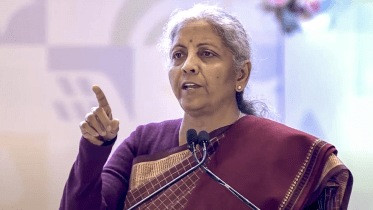A day after India announced its grand ambitions to build its own AI chatbot on the lines of ChatGPT and DeepSeek R1 within the next ten months, the Economic Survey 2024-25 has highlighted the transformative potential of Artificial Intelligence while acknowledging its potential to disrupt the country’s labour market. The Survey hints that concern about AI taking away jobs, particularly in the service sector, may not be unfounded.
To mitigate this potential risk, the Survey has called for a “tripartite compact” between the government, private sector, and academia to develop a “social infrastructure” where current and future workforce can be trained for higher-value jobs so AI can augment its capabilities rather than replace it.
Given the rapid advancements in AI, the Survey warns that this must be done on urgent basis. That said, the fact that developers making AI still have an uphill task to fix issues of reliability and scalability, presents an opportunity to act now and seize it. Ultimately, the Survey advocates for a balanced approach that leverages AI’s potential for economic growth while ensuring development that is inclusive and incurs minimal societal costs.
Economic Survey 2024-25 on AI: Full text
- Developers of Artificial Intelligence promise to usher in a new age, one where a bulk of the economically valuable work is automated. AI is anticipated to surpass human performance in critical decision-making across various fields, including healthcare, research, criminal justice, education, business, and financial services. This can result in large scale labour displacement, especially at the middle- and lower-quartiles of the wage distribution.
- Fears of adverse effects of large-scale AI adoption may not seem as far-fetched when viewed in the context of previous industrial and technological revolutions. As illustrated by Andrew Haldane, the former Chief Economist of the Bank of England, previous industrial and technological revolutions have been ‘painful’, characterised by widespread economic hardships, protracted unemployment for those displaced and widening income inequalities.
- Therefore, as policymakers, the possibility of such an outcome materialising must be taken very seriously, especially for a country like India. India’s economy is predominantly service-oriented, with a large portion of its IT workforce engaged in low-value-added services. These roles are particularly vulnerable to automation, as companies may replace labour with technology to reduce costs.
- Minimising the negative impacts of creative destruction has always required a collective societal effort, involving the creation of new social infrastructure to promote environments where innovation leads to inclusive growth. India will therefore have to fast track the creation of robust institutions through a tripartite compact between the government, private sector and academia.
- Social Infrastructure encompassing Enabling Institutions, Insuring Institutions and Stewarding Institutions are essential to help graduate our workforce towards medium- and high-skill jobs, where AI can augment their efforts rather than replace them.
- However, building these institutions is a time-consuming process as a massive amount of intellectual and financial resources need to be mobilised towards a singular goal. Fortunately, due to AI presently being in its infancy, India is afforded the time necessary to strengthen its foundations and mobilise a nation-wide institutional response.
- Moreover, there are certain challenges that need to be overcome by AI developers before wide-spread adoption can be achieved. Practicality and reliability are core issues that need to be addressed by developers. AI also needs significant infrastructure for scaling, which takes time to build. Lastly, AI models have to target efficiency gains without compromising on performance. Addressing these challenges requires a non-trivial amount of time, which in turn provides India a window of opportunity to act.
- Leveraging its young, dynamic, and tech-savvy population, India has the potential to create a workforce that can utilise AI to augment their work and productivity. Thus, India’s employment challenge is not just one of numbers, but also one of raising the overall quality of its workforce.
- Labour and technology, when balanced in the right way, can complement one another. As history also shows us, through careful integration and institutional support, automation brought along with it a rise in the employment-to-population ratio over the 20th century. In this context, the future of work revolves around ‘Augmented Intelligence’, where the workforce integrates both human and machine capabilities. This approach aims to enhance human potential and improve overall efficiency in job performance, ultimately benefiting society as a whole.
- Policymakers must balance innovation with societal costs, as AI driven shifts in the labour market could have lasting effects. Similarly, the corporate sector must act responsibly, handling the introduction of AI with sensitivity to India’s needs. A collaborative effort between government, private sector, and academia is essential minimise the adverse societal effects of AI-driven transformation and deliver inclusive growth.
